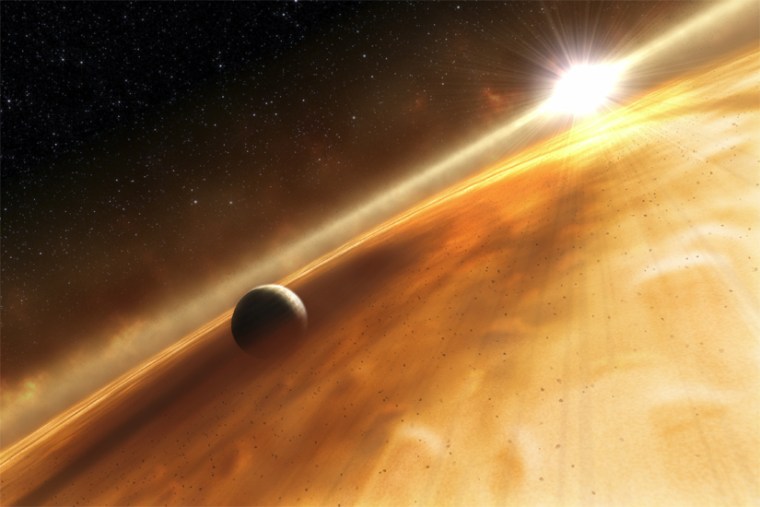Astronomers believe they have found a second distant planet around Fomalhaut, a bright young neighbor star, and that the far-out world — like its sister planet — is shepherding and shaping the star's ring of dust.
If confirmed, theorists have some work to do explaining how the planet, believed to be a few times bigger than Mars, ended up 155 times as far away from its parent star as Earth is to the sun.
"We're learning a lot about planets that are close to their stars, but that is not the full picture. We also want to know about systems where planets are very far out. By considering near-, far- and mid-range, we can get a complete picture of planet formation,” University of Florida astronomer Aaron Boley told Discovery News.
SLIDE SHOW: Exquisite Exoplanetary Art
Of key interest is figuring out whether the planets formed in place or somehow migrated out there, bumped like celestial billiard balls after gravitational encounters with another body or bodies closer to the star.
"Whether that can actually happen is very active area of research," Boley said.
If Fomalhaut's planets are indeed ring shepherds, they’ve been on the job a long time, roughly 100 million years.
"Relative to the age of the star, they must have formed quickly," Boley added.
The suspected planet would be the second planet found orbiting Fomalhaut, a very bright star located about 25 light-years away in the constellation Piscis Austrinus. Fomalhaut is twice as big as our sun and encircled by a disk of dust 16 times wider than the span between the sun and Earth.
ANALYSIS: Also in Fomalhaut: A Comet Crash Zone
The inner edge of the ring is about 135 times as far as away from the star as Earth is to the sun.
The finding was made with a new telescope called ALMA, an acronym for Atacama Large Millimeter/submillimeter Array. With just 15 of its planned 66 antennas operational, astronomers already are expecting ALMA to revolutionize millimeter-wavelength astronomy, much like the Hubble Space Telescope transformed optical astronomy.
"The Fomalhaut image is just the beginning. They haven't even finished getting all of their data. This is just a sneak peek," astronomer Paul Kalas, with the University of California at Berkeley, told Discovery News.
Kalas and colleagues used Hubble Space Telescope images taken in 2004 and 2006 to pinpoint a speck of light believed to be the first direct picture of a planet in orbit around another star system. Astronomers predicted Fomalhaut had a planet smaller than Saturn inward of the ring after earlier observations showed the ring's sharp inner edge.
ANALYSIS: Does Famous Exoplanet 'Fomalhaut b' Really Exist?
Now, another team of astronomers based at the University of Florida used ALMA observations to find a distinct, vertical edge to the outer part of Fomalhaut's ring as well. Both edges are believed to be carved by the steady and stable gravitational tugs of planets.
"What we're really looking at is an analog to our early solar system, an epoch when a planetary system is very dynamically active. Comets and asteroids are everywhere. Young planets have formed. You have impacts on the surfaces, perhaps delivering water to terrestrial planets," Kalas said.
Astronomers plan to use ALMA to map structures in Fomalhaut's ring and possibly see if the inner planet, known as Fomalhaut b, has its own ring, similar to Saturn's. Other targets include Beta Pictoris, which is believed to have a planet of its own circling about as far as Jupiter orbits in our solar system.
